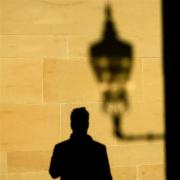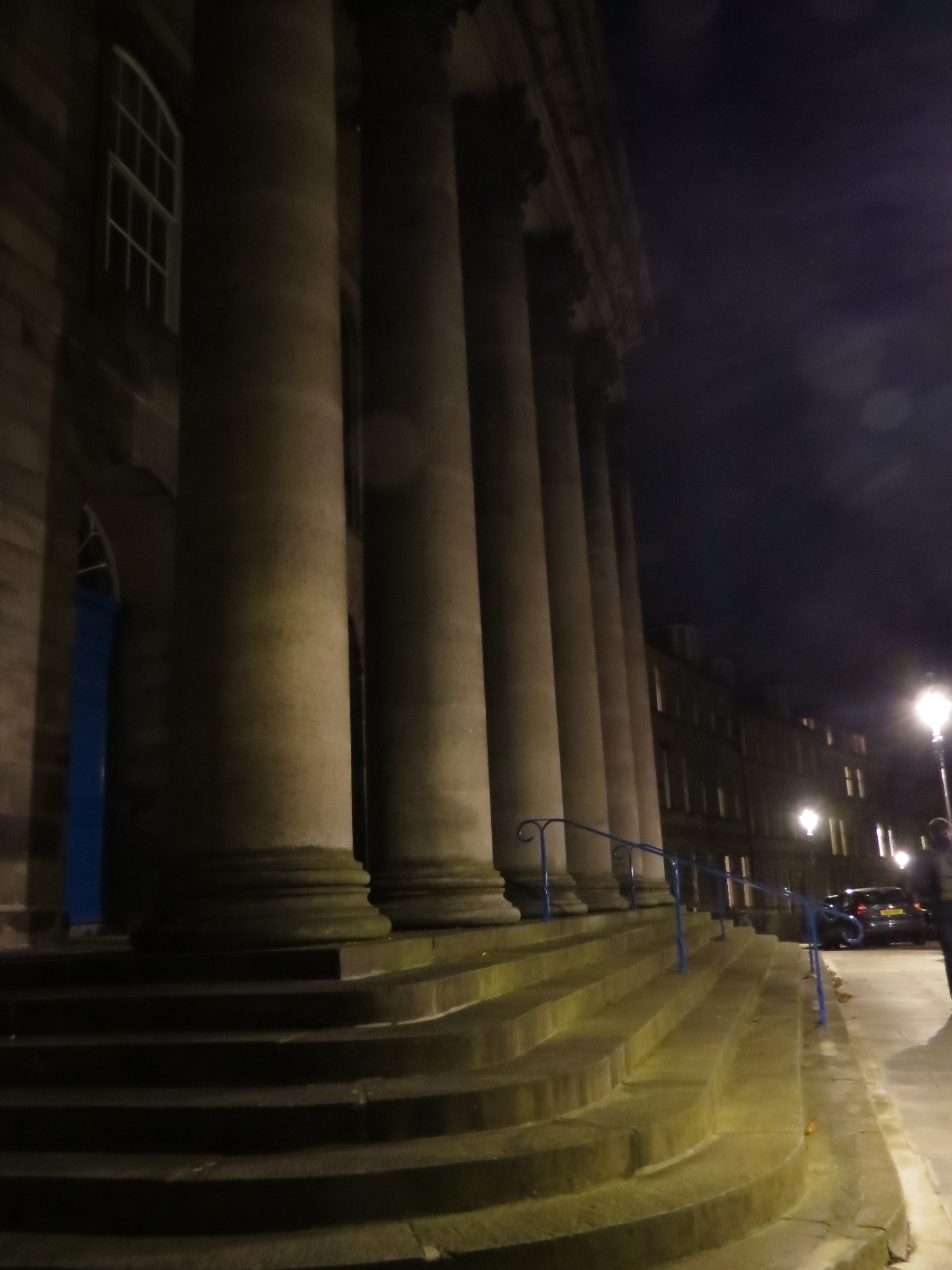
DAVID HILL ON LIGHT AND THE NOCTURNAL CITY
Much is made of the uplifting qualities of sunlight.
I recall my own first year in Edinburgh as a desperate, mostly futile, search for Helios.
But while a street soaked in delicate, mid-morning, golden sunshine has a certain charm, this predilection for the uncomplicatedly solar now strikes me as immature.
Even the northern sunset, once spellbinding, is rapidly losing its appeal thanks to intense fetishisation by social media.
It is time to snatch sundown from the onanists and hand it back to the transcendentalists.

I regret not being around in the era when Leerie would – every evening around teatime, and certainly before taking your seat – have appeared on your street with lantern and ladder, reigniting the distinctive golden glow and accompanying penumbra that both permitted the arrival of night in the city and overwrote the quotidian with something a little more uncanny.
In Edinburgh, the gas lamp survived up until 1965. Sadly, the battle had long since been lost to the harsher tones and greater incidence of the electric interloper, which by that stage had been gradually imposing elucidation on the night city for well over half a century.
This transformation radically reshaped the nocturnal streetscape, illuminating what was obscure, and, with it, constructing a different night city.
Greater illumination – from businesses as well as street lighting – certainly improved public safety, but also unintentionally involved losing something of value: the idea of radiance as aesthetic. By this I mean softer tones that please as much by what they obscure in mystery as by what they gently illuminate.
I'm not sure quite why I've become so fascinated with street lights, but I do remember when and where this interest first manifested itself. It was kindled at a very young age by an old, utilitarian, sodium-vapour lamp (sadly no longer there) just beyond the front garden. More precisely, what I mean is fascination with the light emitted rather than its intended purpose.
As a child, I would wait expectantly for the exact hour, sometimes capturing the precise moment of the pink handmaid's appearance to prepare for her amber mistress. The warm glow of the heated sodium vapour seemed – and here I have to apologise both to John Keats and to science – to pipe photons to the spirit.
Recollection of this childhood experience has since accumulated further layers of meaning, but also gifted an appreciation of a lighted street lamp's allure in the right place. For the past few years, Edinburgh – and the eastern New Town and Bellevue in particular – has amply fed this fascination.
The light from a sodium lamp stuck to the side of a tenement may enchant more than the grandest of heritage-grade cast-iron fittings. A banal street light that stands guard outside a small car park in Broughton Market, perennially stuck halfway between adolescent pink and mature orange, pleases no end. The anaemic light emitted by the austere helmeted nightwatchmen of Great King Street never will.
Bellevue Crescent in particular may, I suspect, have been Balla's inspiration. Certainly a striking street at any time of day, this jewel of the eastern New Town is finest lamp-lit, with shutters closed, dusk rapidly fading to black. It is at this point that its Georgian arc, presided over by St Mary's, is rebooted and refashioned by the metaphysical. Its elegant new street lights, appropriately spaced, do not drown the street in light, nor do they simply illuminate it.
Rather – whether subtly backlit by a navy twilight or fully enmeshed in night – their light infuses the scene with a temporary lifting of the veil of the everyday, and perhaps just a glimpse of something sublime.
This is because the street possesses what I would call the magic ratio: the serendipitous balance of light to dark. It is one of a rare breed of streets whose setting and fixtures allow light to become an equal partner to material, the two together producing something transcendent.
The image's apparently paradoxical daytime sky and nighttime street, lit by a single lamp, actually entails a harmony of natural and artificial light. This can, to my mind, be seen as an artistic counterpart to contemplating the twilit Bellevue Crescent from a vantage point on the grass immediately to its east.
The particular and peculiar interplay of light and shade in The Empire of Lights closely resembles experiencing Bellevue Crescent, causing the viewer – at least this viewer – to experience the interplay of luminosity and darkness as both the painting's and the street's raison d'être. In this particular New Town setting, the distinct lights and shades of evening and nocturnal hours add lyricism and fluidity to the formality of day.
You are, of course, free to imagine projectile vomiting – of a green or any other hue – occurring behind any of the street’s closed doors.
Got a view? Tell us at @theSpurtle and Facebook Got a Broughton psycho-geography of your own? Send it to us at spurtle@hotmail.co.uk
 Jason Clark Very illuminating...
Jason Clark Very illuminating...
@NewTownFlaneur @theSpurtle Thoughtful, interesting, beautifully written-sets bar very high for what I assume is a #psychogeography series.
@thehoffster Yes – we want further personal responses to/ruminations around Broughton locales. Subject, length, approach are all flexible.
 Rhys Fullerton This is excellent.
Rhys Fullerton This is excellent.
Quite beautiful @theSpurtle @Fifepsy @NewTownFlaneur http://www.broughtonspurtle.org.uk/news/psychogeographies-1-bellevue-crescent …
 See also Breaking news (28.10.15) and (29.10.15).
See also Breaking news (28.10.15) and (29.10.15).

 Li
Li
